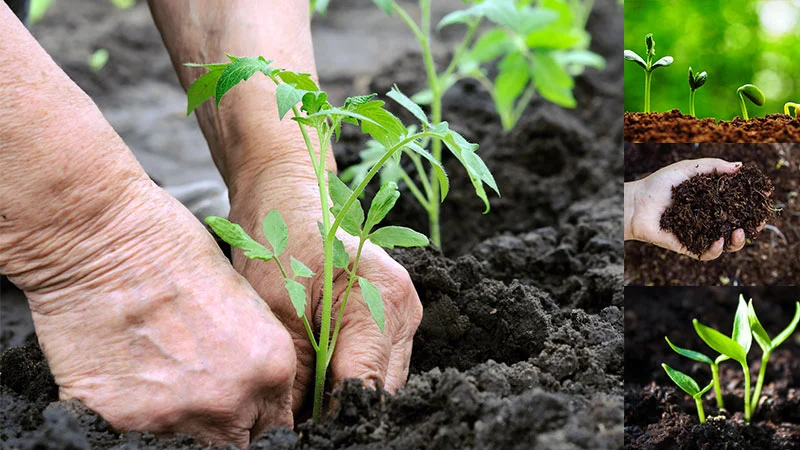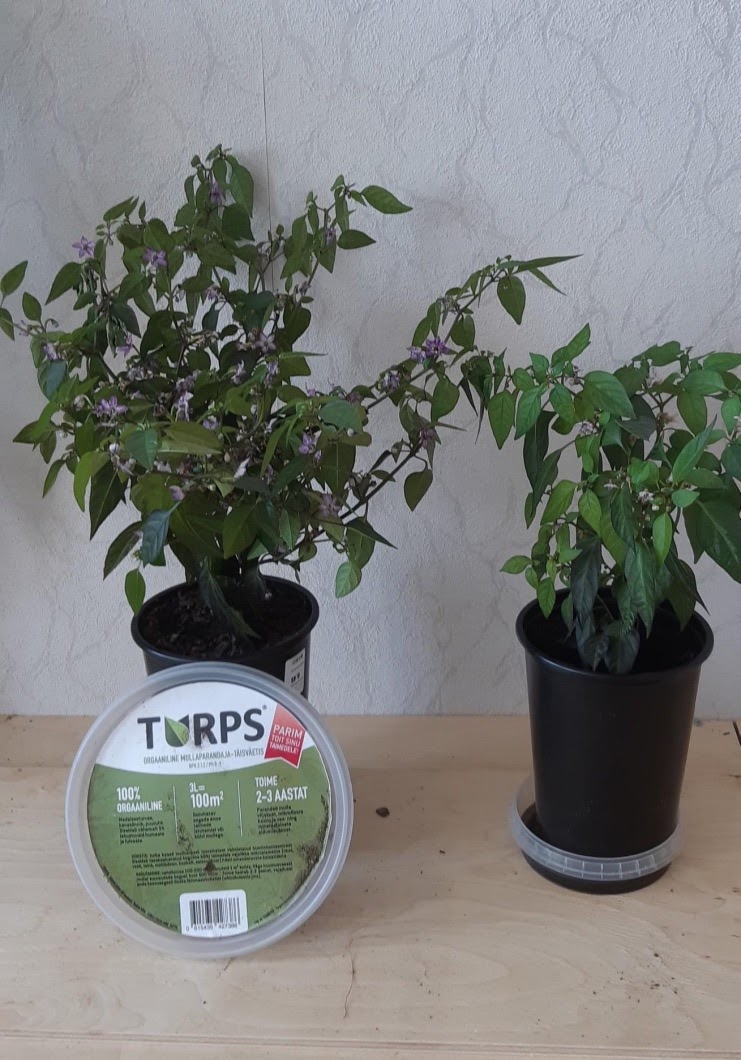How Do Humic Substances Work?
Humic substances, including humic acids and fulvic acids, are the result of the natural decomposition of organic matter over time.
These complex molecules play a pivotal role in enhancing soil health and promoting robust plant growth.
How Humic Substances Work: Unlocking Nature’s Secret to Healthier Soil and Crops
When it comes to nurturing healthy soil and thriving plants, humic substances are nature’s hidden gem. These organic compounds—including humic acids and fulvic acids—are the byproducts of the slow, natural decomposition of plant and animal matter over time. While they may sound complex, their role in agriculture and gardening couldn’t be more straightforward: they help unlock nutrients in the soil, boost plant growth, and improve the overall health of your crops and soil.
But how exactly do these powerful molecules work their magic? From enhancing nutrient absorption to strengthening plant resilience against environmental stress, humic substances offer a wide array of benefits that transform ordinary soil into a fertile, life-supporting environment. In this article, we’ll dive deep into the science behind humic substances, explaining how they function and why they’re essential for sustainable, productive agriculture.
How Do Humic Substances Work?
Nutrient Mobilization: Humic acids have the unique ability to chelate, or bind, with essential nutrients in the soil, such as iron, magnesium, and calcium. This chelation process transforms these nutrients into forms that are more easily absorbed by plant roots. For instance, in soils with high pH levels, iron can become insoluble and unavailable to plants. Humic acids chelate the iron, keeping it soluble and accessible, thus preventing iron chlorosis (yellowing of leaves) in plants.
Enhanced Root Development: Humic substances stimulate root elongation and branching. They influence root cell membrane permeability, allowing for increased water and nutrient uptake. A practical example is observed in turf management; applying humic acids to lawns results in deeper root systems, leading to lush, green grass that requires less frequent watering.
Improved Soil Structure: Humic acids promote the aggregation of soil particles, enhancing soil structure. This improved structure increases aeration and water infiltration, which is particularly beneficial in heavy clay soils. For example, farmers often apply humic substances to compacted fields to improve soil tilth, making it easier for roots to penetrate and access nutrients.
Stress Mitigation: Plants treated with humic substances exhibit increased tolerance to environmental stresses such as drought, salinity, and temperature extremes. Humic acids enhance the production of antioxidant enzymes in plants, helping them cope with oxidative stress. In vineyards, for instance, the application of humic substances has been shown to improve grapevine resilience during periods of water scarcity.
Microbial Activity Stimulation: Humic substances serve as a carbon source for soil microorganisms, promoting a thriving microbial community. These microbes play a crucial role in nutrient cycling and organic matter decomposition. In composting operations, adding humic acids accelerates the breakdown of organic materials, resulting in richer compost in a shorter time frame.
TURPS: Bringing the Power of Humic Substances to Your Garden and Farm
TURPS isn’t just any fertilizer—it’s an innovative, organic solution designed to tap into the natural power of humic substances. Using a patented process, TURPS combines peat and other natural materials to create a rich blend of humic and fulvic acids that work wonders for both your plants and soil.
What Makes TURPS Special?
Faster Plant Growth: Want your plants to flower and fruit quicker? TURPS stimulates rapid root development, leading to faster blooms and fruit production. The result? Yields can increase by 20–40%.
Healthier, Richer Soil: TURPS doesn’t just feed your plants—it nurtures your soil too. It’s packed with active organic compounds that improve soil structure and boost nutrient content, giving your crops the best possible growing environment.
Eco-Friendly and Waste-Free: One of the coolest things about TURPS? It’s made with sustainability in mind. The entire production process is waste-free, perfectly aligning with circular economy principles. Good for your plants and good for the planet!
Better Water Retention: If you’re gardening in dry or arid areas, TURPS is a game-changer. It improves the soil’s ability to hold onto moisture, meaning your plants stay hydrated longer and you spend less time watering.
How to Use TURPS:
Using TURPS is simple and flexible. For the best results, mix it with the soil before planting or sowing. The amount you need will depend on the type of plants and soil you’re working with:
-
Tomatoes or Strawberries: Add about 200 ml of TURPS into each planting hole.
-
Shrubs: 200 ml per plant does the trick.
-
Fruit Trees: Apply 1 to 3 liters per tree for optimal growth.
After planting, give your plants a generous watering. TURPS can absorb water up to 600 times its own volume, ensuring your plants stay hydrated and healthy.
Humic substances are nature’s way of boosting soil and plant health, and TURPS makes it easy to harness those benefits. Whether you’re a home gardener or a commercial farmer, TURPS helps you grow stronger plants and maintain healthier soil—all while supporting sustainable, eco-friendly farming practices.
What are humic substances?
Humic substances are organic compounds, including humic acids and fulvic acids, formed from the natural decomposition of plant and animal matter over time. These complex molecules play a key role in improving soil health and promoting robust plant growth.
How do humic substances benefit plants?
Humic substances help plants by mobilizing nutrients, enhancing root development, improving soil structure, and increasing resilience to environmental stress. They make essential nutrients like iron, magnesium, and calcium more accessible to plant roots, stimulate root growth, and boost photosynthesis.
What is nutrient mobilization, and how does it help plants?
Nutrient mobilization refers to the process where humic acids chelate (bind with) nutrients in the soil, making them easier for plants to absorb. For example, in high pH soils where iron becomes insoluble, humic acids keep it soluble and available to plants, preventing issues like iron chlorosis (yellowing leaves).
How do humic substances improve soil structure?
Humic acids promote the aggregation of soil particles, creating a crumb-like structure that improves aeration and water infiltration. This is especially beneficial in compacted or clay-heavy soils, making it easier for roots to grow and access nutrients.
Can humic substances help plants deal with environmental stress?
Yes! Plants treated with humic substances are better equipped to handle stress from drought, salinity, and extreme temperatures. Humic acids enhance the production of antioxidant enzymes, which help plants cope with oxidative stress.
How do humic substances affect soil microbes?
Humic substances serve as a carbon source for beneficial soil microorganisms, promoting a healthy and active microbial community. These microbes are essential for nutrient cycling and organic matter decomposition, which further improves soil fertility.
What is TURPS, and how does it use humic substances?
TURPS is an innovative, organic humate fertilizer that harnesses the power of humic and fulvic acids. Developed through a patented process using peat and other natural materials, TURPS is designed to boost plant growth and soil health while being environmentally sustainable.
How does TURPS improve plant growth?
TURPS stimulates rapid root development, leading to quicker flowering and fruiting. This results in yield increases of 20–40%. It also enhances nutrient absorption and photosynthesis, helping plants grow stronger and healthier.
What makes TURPS environmentally friendly?
TURPS is produced with sustainability in mind. The entire production process generates no waste and aligns with circular economy principles. It’s good for your plants and good for the planet!
How does TURPS help with water retention?
TURPS significantly improves the soil’s ability to retain moisture, which is especially helpful in dry or arid regions. This means your plants stay hydrated longer, and you’ll spend less time watering.

TURPS is a versatile organic soil enhancer that significantly improves soil structure, fertility, and water retention. It is especially beneficial for various agricultural and horticultural applications.
How to use
Fruit Trees and Shrubs
Improving Crop Yields
Urban Gardening
Turf and Landscaping
Sustainable Farming
Science
Yield Growth
Improved Soil Structure
Root Development
Better Resistance
Soil Fertility Improvement
Contact Us
TURPS Organic Ltd
Pärtsaare, Estonia
info@turpsorganic.com
Mon-Fri 09.00 a.m-05.00 p.m
TURPS is suitable for use in organic production in accordance with the
requirements of Commission Regulations (EC) No 834/2007 and 889/2008
© All right reserved by TURPSORGANIC
Privacy policy

